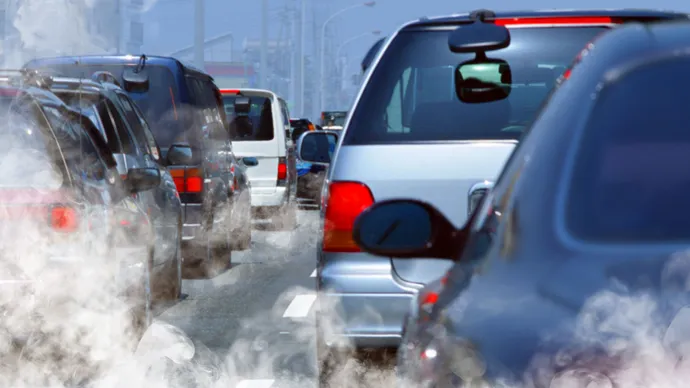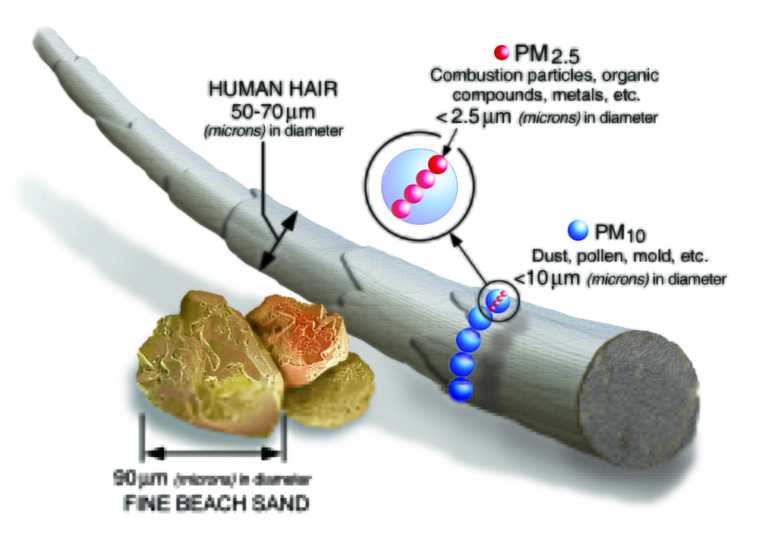The effects of vehicle emissions on human health
Until two hundred years ago, only smoke from burning wood could be seen in human societies. But now smoke comes in many forms. Some of them are harmful to human health and others are harmless! All types of smoke consist of gases and liquids solid particles. Hazardous types of smoke include wood, cigarettes, kerosene, gasoline, diesel, natural gas and smoke from coal. This is because the smoke also contains toxic gases or elements. Gasoline, diesel and CNG are converted into gases and chemicals in vehicles running on the roads.

After burning in the engine, 71% of petrol (67% of diesel) is converted to nitrogen gas. This gas does not harm human beings, it is 78% of the atmosphere in which we breathe. The other major component of combustible fuel is carbon dioxide gas. The petrol engine emits 14% while the diesel engine emits 12% of this gas. This gas has an indirect effect on human health. In the last 150 years, the amount of carbon dioxide in the atmosphere has increased due to the indiscriminate burning of fossil fuels (coal, wood, petrol, diesel and gas).
This gas is now depleting the ozone layer, which protects the Earth from the sun's dangerous ultraviolet rays. The global climate has also changed due to the excess of this gas in the atmosphere. For example, there are famines somewhere and more storms are coming. Increasing the amount of carbon dioxide in the atmosphere is a wake-up call for mankind. After this gas, petrol and diesel burn and produce 13% and 11% "water vapor" respectively. They also do not harm human beings. The diesel engine also emits 9.7% "oxygen" and is a harmless gas.
After burning, 2% of petrol and 0.3% of diesel contain hazardous gases and chemicals. Of the above 2% of petrol, carbon monoxide accounts for about 80%. It is a colorless, odorless and tasteless poisonous gas. When carbon fuel is burned in a place where there is little or no oxygen, this gas is produced. When carbon monoxide enters our body through inhalation, it sticks to hemoglobin. Oxygen reaches billions of cells in our body just by riding on hemoglobin. But when carbon monoxide captures this ride, then oxygen cannot ride. As a result, the cells of the heart and brain die within 1.5 minutes of not receiving oxygen, and at the same time, the human being dies.
However, death occurs when there is a severe lack of oxygen in the atmosphere. But even the slightest increase in the amount of carbon monoxide in the atmosphere can cause many medical problems in humans. When car smoke accumulates on a road, the people living there are naturally prone to these medical problems. This is because the amount of gas in the atmosphere increases while the amount of oxygen decreases. Every one millionth of the air in the home air contains only 0.5 to 5 parts of carbon monoxide.
About 10% of fueled gasoline contains nitrogen oxides. This mixture is formed by the combination of nitrogen and oxygen gases in the engine. When the amount of this mixture increases in an area, the combination of smoke and fog there produces SMOG. This smog causes respiratory diseases. If the volume in the air increases too much, the chances of acid rain increase. This rain can have a detrimental effect on plants, aquatic animals and buildings. If a man is on a road where there is always a lot of smoke when the traffic is heavy, then his lungs get damaged due to constant drinking of nitrogen oxides.
Hydrocarbons make up the last 10 percent of the fueled gasoline. These are organic compounds found in a mixture of hydrogen and carbon gases. There are different types of them like Benzene, Methane, Propane, Augustine etc. These organic compounds are also harmful to human health. Hydrocarbon compounds enter the human body and damage tissues. If, constantly reaching the body, then the human kidneys, brain and nervous system are damaged.

Next, there come the particulate matter. This particulate matter consists of ash, metal particles, sulfate and tiny particles of silicate. These particles easily enter the human body through the mouth and harm us. Drinking particulate matter can cause headaches, lethargy and coughing. Sometimes it is difficult to breathe. If a person is constantly exposed to these particulate matter, then he gets heart and lung diseases.
Modern research says that if a person spends some time of the day in inhaling car smokes daily, he becomes a victim of heart diseases, respiratory diseases and even cancer. In addition, the smoke damages the brain cells (neurons). That is why when the brain is weak, a person's memory becomes dull and he finds it difficult to learn new things.
Due to the above health hazards, we should try not to stay too long in an environment where there is a lot of smoke. If we are forced to work there, we should try going to a garden or a clean place in an hour or two to get oxygen. Having plenty of oxygen in the body reduces the harmful effects of smoke.
Every car, truck, bus and even motorcycle in the United States and Europe today has a device called "Catalytic Converter". Its purpose is to reduce or eliminate hazardous gases and chemicals from burning fuel. It is due to this device that the thick clouds of smoke on American and European roads are not visible as they should be.
Thank you for reading! Stay Safe!👋😌
References:
1- https://rac.com.au/car-motoring/info/vehicle-emissions-health